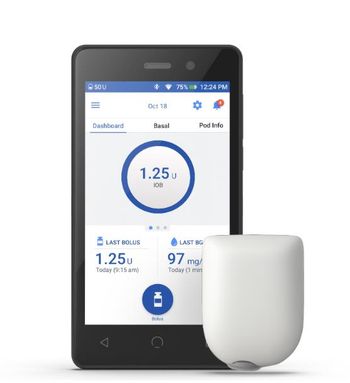
Disparities Exist in Use of Continuous Glucose Monitoring
Patients with type 1 diabetes were more likely to be prescribed continuous glucose monitoring compared with those with type 2 diabetes, a new analysis finds.
Racial and ethnic minorities and those without insurance are less likely to be prescribed a continuous glucose monitoring device, according to results from a cross-sectional study recently
“It is notable that these disparities exist among patients receiving primary care in FQHCs [federally qualified health centers], which represent the main system of care for historically underserved groups,” researchers wrote. “Our findings highlight the importance of expanding efforts to promote diabetes health equity in this setting.”
Continuous glucose monitoring offers better management of diabetes, improving glycemic control, promoting treatment satisfaction, and enhancing quality of life, and has the potential to reduce utilization of healthcare services because of hypo- and hyperglycemic events.
But uptake of glucose monitoring has remained low. For those with type 1 diabetes, roughly half of patients in a commercially insured population used continuous glucose monitoring from 2016 to 2019, according to a study in Clinical Diabetes
In the JAMA Network Open study, researchers, led by Amisha Wallia, M.D., M.S.C.I., associate professor, Endocrinology, Metabolism, and Molecular Medicine at Northwestern University Feinberg School of Medicine, conducted a cross-sectional analysis of electronic health record data from 1,168 patients with type 1 diabetes and 35,216 patients with type 2 diabetes receiving primary care in federally qualified health centers.
They reviewed medical records for January 2014 to February 2021 for sociodemographic factors, clinical characteristics, and continuous glucose monitoring prescriptions. Federally qualified health centers provide primary care and preventive care, including health, oral, and mental health/substance abuse services.
Researchers wanted to examine the association between continuous glucose monitoring prescriptions and individual characteristics among patients with type 1 or 2 diabetes.
They found that among patients with both type 1 diabetes and type 2, those who reported Hispanic ethnicity, Black race, or were uninsured had lower odds of receiving a continuous glucose monitoring prescription than White or insured adults.
Orders for continuous glucose monitoring were greater than 10 times more common in the management of type 1 diabetes than type 2 diabetes. For patients with type 2 diabetes, the level of glycemic control and diabetes complications were associated with prescription orders for continuous glucose monitoring.
One limitation of the study, researchers said, is that orders in the electronic health system are not equivalent to long-term use and this could not be verified. Additionally, researchers said that federally qualified health centers don’t include specialty care by endocrinologists, who may be more likely to prescribe continuous glucose monitoring.
Future research is needed, they said, to understand barriers to continuous glucose monitoring use among clinicians and their patients in this care setting.
Newsletter
Get the latest industry news, event updates, and more from Managed healthcare Executive.






















































